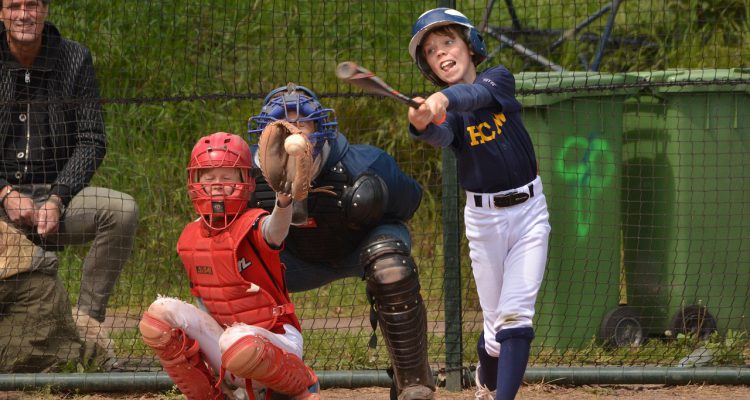A defining moment for many youth baseball hitters occurs somewhere between the ages of 12 and 15. This is typically the age range when most pitchers begin throwing curveballs and other breaking balls.
That first taste of changing speeds and movement on pitches can be a real eye opener for young hitters. Flaws in their mechanics and mental approach will become magnified. If they don’t learn to make adjustments quickly, they are bound to have many frustrating at bats in their future. That frustration, sadly, can mount to a point that would make anyone want to quit the game of baseball.
Unsurprisingly, “How do you hit a curveball,” is one of the most common questions I’m asked by young hitters and their parents. The short answer is:
“Stay inside it, behind it, and below it!”
1. Stay Inside It
Staying inside of the ball when hitting is a concept you’ll hear talked about at every level of baseball. It is important on every type of pitch, but especially a breaking ball.
How do we know if a hitter is staying inside it or not? There are several clues you can get from watching the ball come off of their bat during batting practice.
Staying inside the ball:
- Contact most often is on the barrel or “sweet spot”
- More line drives and fly balls than ground balls
- Balls are being hit to all fields, not just the pull side
Coming around the ball:
- Contact is all over the bat, most often on the end of the bat
- More ground balls than line drives or fly balls
- Balls are being hit mostly to the pull side on the ground (right handed hitter hitting ground balls to 3rd base and shortstop)
During tee work, there is a simple way to get a hitter to begin thinking about staying inside of the ball. No matter the drill you are working on, or the location of the tee, you can set the ball up so that it has two seams running vertically that are visible to the hitter. There will be an inside and an outside seam. Have the hitter think about attacking the inside seam each time he hits the ball off the tee.
On the mechanics side of it, in order to stay inside of the baseball, you must keep your hands back. If your hands come forward early or your arms and hands begin before your lower body, you will come around the baseball.
Use “Front Arm Connection Drill” to make sure that the hands are staying back.
Another great drill to work on staying inside of the ball is “Angle Drill.”
2. Stay Behind It
You can’t think about going out to get the breaking ball, instead you have to let the ball get to you. Once the ball gets there, you must be thinking about keeping your head and body behind contact. If your head and upper body continue to move forward as you begin the rotation part of your swing, the result will be a downward, choppy swing. If you are trying to match up a downward swing, with a downward moving pitch, making contact with the ball becomes extremely difficult.
Three coaching cues I use during practice with hitters who try to go out to get offspeed are:
- Imagine at the moment that you begin to swing an invisible wall drops down in front of your head and it can no longer move forward.
- Make your head finish behind your belly button after the swing.
- See the breaking ball deeper in the zone. Let it get deep!
Use the “Loft Drill” to work on staying behind it.
3. Stay Below It
In simple terms, if the ball is moving down at a certain angle, the hitter needs to match that angle with upward movement.
Two mechanical keys that allow this to happen are:
- Keeping the hands back (as mentioned above).
- Getting down into your legs and using them.
A hitter whose legs are stiff or nonathletic will struggle with a breaking ball that has good downward movement.
Three checkpoints for proper use of the legs in the swing are as follows:
- Both knees are relaxed, have slight bend, and are not locked upon landing the stride.
- Front leg stiffens up as the rotation of the swing progresses.
- Back knee has bend at the finish of the swing, causing the back leg, from knee to hip to be perpendicular to the ground.
Use the “Back Knee Drill” to work on staying below it.
Still out in front of offspeed? Want to learn the secrets to timing the curveball? Check out our post on timing here!

